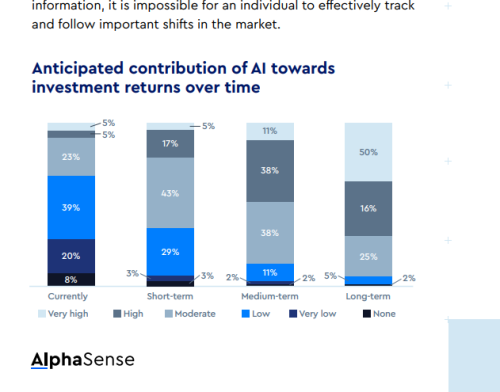As IROs, if you’re going to understand what moves your share price, you need to know which ‘bucket’ your company falls into. That was the message from a panel promising to unlock the secrets of your stock’s trading dynamics – and offering strategies for success – as part of the IR Magazine Think Tank – Europe, on Thursday, June 20 in London, an invitation-only event exclusively for senior IR officers.
Lauren McDonald, conference producer at IR Magazine, was joined on stage by Gabriel Gonzalez-Gutierrez, investor relations and ESG manager at Rolls-Royce – an engineer who came to the role from a background in engine design at the company – and Neddy Yahya, senior cash trader at Bank of America, who talked about how his position involves ‘learning a little bit about everything’, including market dynamics and what drives market movements.
Setting the scene
Sometimes, there are clear drivers behind a share-price movement. But even when there isn’t, Gonzalez-Gutierrez stressed that there is always a reason. ‘Markets aren’t random, they are chaotic,’ he said, adding that there’s always a thought process on the investor side and, for IR, the question is whether or not ‘to intervene, [to] change your messaging or reinforce parts of that message’.
This can be a particular challenge at a company like Rolls-Royce, where the firm straddles different sectors, he continued: ‘Three quarters of the revenue [at Rolls-Royce] comes from aerospace and defense, but a quarter comes from industrials – and they have quite different dynamics.’
An additional challenge is the rapid change that has taken place across the financial markets in the last two decades or so, added Yahya. With hindsight, he said it feels that share moves were more ‘simplistic’. ‘If there’s good news, they go up,’ he explained. ‘If it’s bad news, they go down. If there’s good news in the economy, everything will go up.’
Today, however, IROs must contend with algorithmic trading, dark pools and more. ‘Now, stocks are put into different factors and buckets and, from an IR perspective, it’s really important to understand where your company sits in these buckets and in these factors,’ said Yahya.
And sometimes, it can look as if nothing significant has happened, he continued: ‘You could look at the market in the day and see the FTSE and the EURO STOXX unchanged – it looks like nothing’s happened that day. But underneath, there could have been significant rotation. There could have been massive degrossing and, on the trading floor, we might have talked about it being a crazy day. To anyone not on the floor, you wouldn’t have thought anything dramatic had happened.’
This is all about what bucket you’re in, he added: ‘You have factors like momentum, quality growth, whether you’re an AI winner or an AI loser, whether you’re in the most-shorted basket or not.’
The data rabbit hole
Asked how IROs could manage, monitor and analyze the huge amount of data out there, Yahya warned against ‘going down the rabbit hole of wanting to know everything that’s happening’ – partly because investors don’t want you to know everything. ‘The reality is, as markets have become more sophisticated, investors have become more sophisticated in their style of trading [and] everything has become a little less clear and less visible,’ he added.
There are tips and tricks IROs can put to use to try to clear the fog, however. Yahya and Gonzalez-Gutierrez agreed that ‘in the age of AI and algorithms’ it is personal relationships that become more important – for example, in leveraging broker relationships when seeking to better understand your share register or building relationships that ultimately allow you to mine information from stock-loan teams.
‘We have to be a bit more creative in trying to discover where and what people are doing,’ said Yahya. ‘A big part of that is talking to people.’ He also pointed to the benefits of Bloomberg for everything from whether or not a trade is ‘high’ or ‘low’ touch – which will dictate how much clarity you can gather on it – as well as how consensus estimates are changing, for example.
Gonzalez-Gutierrez added that for an IRO, this information is not only about the data itself as an internal tool. ‘Bloomberg also gives you access to the information [other] people are using, that the funds are using – so you can check your data,’ he explained, using ESG as an example. ‘Some ESG factors are key for some funds to be able to own you, and if you don’t disclose [that data], they wouldn’t be able to [buy] your stock. [Then] you need to make sure all the information available is correct.’
After talking about the impact of retail shareholders and how that group is increasingly accessing the market through ETFs – which bring their own challenges – the conversation moved back to stock baskets and how a group move into an index can impact your stock.
But while all these factors are important, with IROs advised to be aware when volatility might be on the horizon, Yahya also noted how easily things can change.
‘Understanding the dynamics and the themes of the week or the month is hugely important,’ he said. ‘A month ago, the market was most worried about inflation rates staying high for longer. Now it’s worried about a potential hard landing, about elections and political uncertainty across the world. Every month it’s a different topic and you’ve got to think a lot about how your company sits in that theme.’










